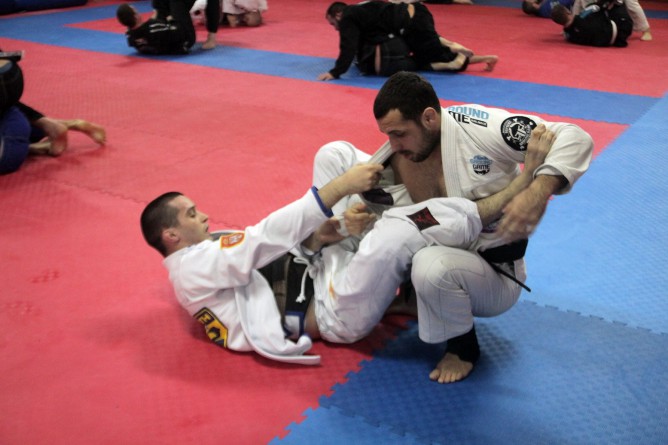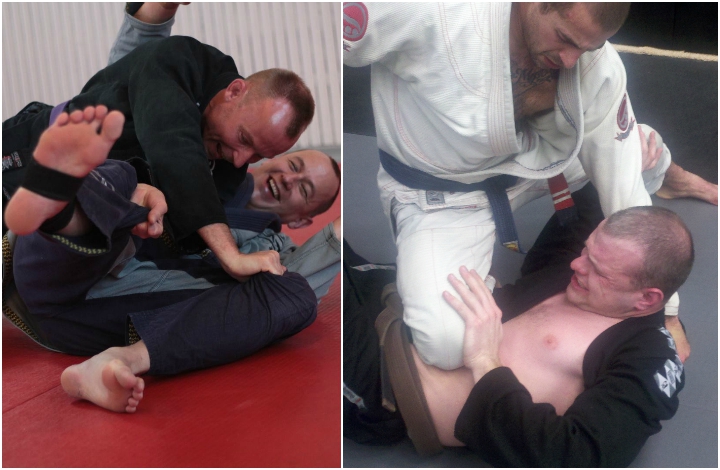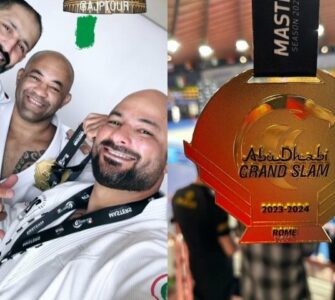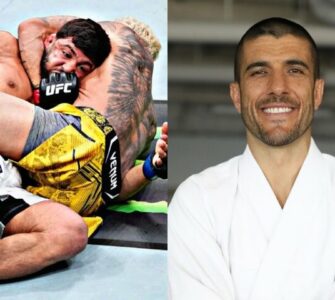This topic is a sensitive one. There are people who do not believe in drilling techniques (Kit Dale for instance) and there are people who drill endlessly in order to sharpen their technique , drilling being in favor of sparring.
When analysing this topic first we must remember that every person is unique. In our case, people don’t all learn the same. There are people who can learn very fast just by watching a technique, there are people who can just play it out in their minds over and over and learn it, there are people who have to feel the technique being done on themselves in order to learn it and also there are people who need some or all of the above.
Let’s analyse the two training methods:
Drilling – Helps the practitioner learn the technique and it’s details without a opposing partner. Also helps with the understanding of the principles behind a technique. The main point behind drilling is learning a move , it’s details and making it an automatism. The problem with drilling is that the partner offers no reaction, thus the one doing the drills won’t know what actual problems he might face while doing his technique.
Gianni Grippo (Multiple times world champion) in this interview, believes that drilling doesn’t beat down your body as mush as rolling and that it’s even even more productive:
The biggest mistakes people make in training that many believe are the “keys to success” is training hard all the time. I see many young athletes, just training, training, training and it’s great at first but the body begins to break down after a while. Once they lose a match they say “I have to train harder” but in fact, they should be focusing on training smarter. Like mentioned earlier, it’s not all a physical game but it is also mental. Drilling techniques do not beat down your body as much as training yet it is just as productive (if not more than training hard.) I do not discourage training hard as it is essential for improvement, but it cannot be viewed as the only form of improvement.
check out this great collection of drills from Watchbjj.com that you can ad to your training.
Sparring – Helps the practitioners try the technique they have learned in live combat, see how their opponent counteracts the technique, helps him adapt it to his game plan. The problem with sparring is that both partners will be going at 100%, thus whoever is trying a recently learned technique will have to do it the right way and do it fast, thus not allowing room for mistakes in the execution of the technique.

Kimura BJJ Academy in Belgrade, Serbia
Two additional training methods proposed:
Light sparring – Sparring at 30-50% will help you practice the technique without a having an all out opponent coming at you. It will help you see the opponent’s reactions when you try your technique, it will make you correct your mistakes on the go and help you memorise the technique.
Flow drills – Drills where the opponent gives a minimum of resistance, allowing you to do your technique , get into the desired position then continue with one or two more techniques that link up well with each other from the respective position , all while the opponent puts out a minimum of resistnce.
Both training methods are important to learning and implementing new techniques and both have their advantages and disadvantages, thus one should not be sacrificed in favor of the other.
What should you do ?
Try drilling a technique on both sides up to the point where you feel comfortable executing it (probably around the 50-100 reps mark) , then try implementing it in flow drills then move on to light sparring (30-50 % resistance) where the partner tries to defend and gives a reaction for you to adapt , see what problems you have with the technique, fix them , then try implementing it in full sparring.
Of course everyone is different, what might work for some will not work for others. Feel free to develop your own routine for learning a technique (some may need more drilling, some may need more light sparring, etc. ) .

















